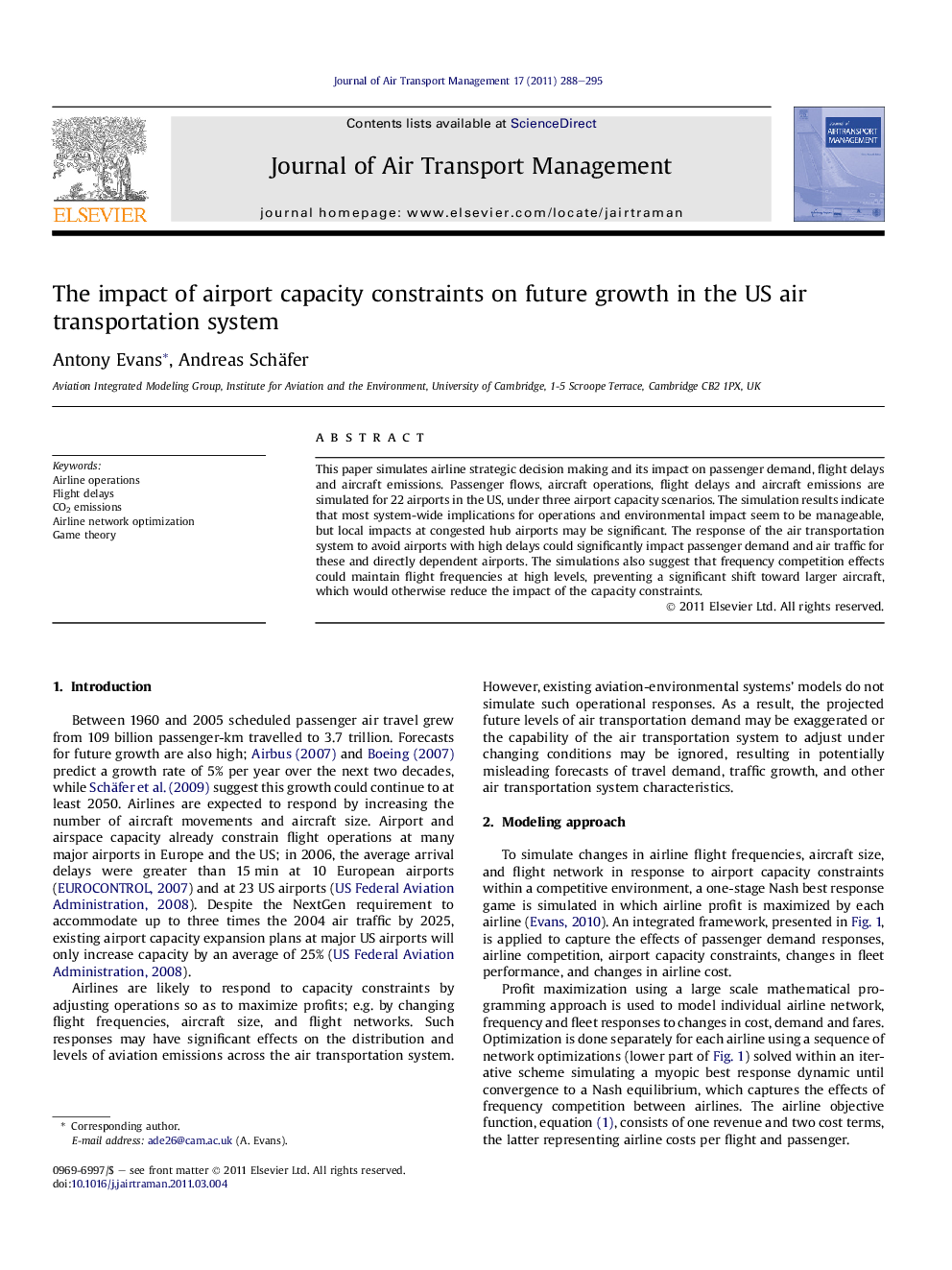| کد مقاله | کد نشریه | سال انتشار | مقاله انگلیسی | نسخه تمام متن |
|---|---|---|---|---|
| 1031195 | 942917 | 2011 | 8 صفحه PDF | دانلود رایگان |

This paper simulates airline strategic decision making and its impact on passenger demand, flight delays and aircraft emissions. Passenger flows, aircraft operations, flight delays and aircraft emissions are simulated for 22 airports in the US, under three airport capacity scenarios. The simulation results indicate that most system-wide implications for operations and environmental impact seem to be manageable, but local impacts at congested hub airports may be significant. The response of the air transportation system to avoid airports with high delays could significantly impact passenger demand and air traffic for these and directly dependent airports. The simulations also suggest that frequency competition effects could maintain flight frequencies at high levels, preventing a significant shift toward larger aircraft, which would otherwise reduce the impact of the capacity constraints.
► The paper develops new model forecasting air traffic growth in the US under airport capacity constraints.
► The model used maximizes airline profit while simulating a strategic game between airlines producing results indicating that capacity constraints may impact air transport at local and system levels.
► Simulations suggest that airport capacity constraints may induce airlines to shift traffic between hubs and that they may not induce an increase in aircraft size.
Journal: Journal of Air Transport Management - Volume 17, Issue 5, September 2011, Pages 288–295